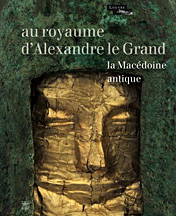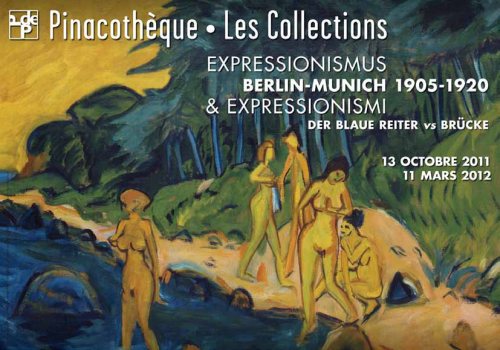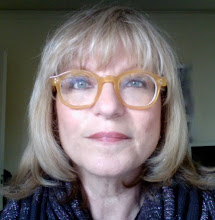Monday, November 28, 2011
In the Lagoon
It's probably sacrilegious to say this, but after three days in the streets and canals of Venice we wanted a break, and so we got on a waterbus at Fondamenta Nuove to go have lunch on Torcello, the tiny island housing Locanda Cipriani, a 13th century church and 16 full-time residents.
Since there's no direct vaporetto to Torcello we went first to Burano, known for its lace and multi-colored houses. This is not the better known Murano, with dozens of factories turning out tourist glass only 10 minutes from Venice itself. Burano is a good 40 minutes from La Serenissima and unfortunately no longer turns out even tourist lace; nearly everything but the most expensive handmade stuff comes from Asia.
However the sun remains shining, and the tourist trade keeps the residents in their brightly painted houses, and all's right with the world.
Even here on Burano though, history more recent than the time of the Doges makes its mark. This little piazzetta has been renamed in honor of the 9/11 victims.
Another boat takes us on to Torcello, where we find ourselves walking a paved path along the single canal, surrounded by fields, the occasional house, and a couple of cafés along the path. This couldn't be farther from the bustle and buildings of Venice.
We have a very pleasant if overpriced lunch at Locanda Cipriani, disappointed that this late in the season they are no longer serving in the garden. With only vaporetto every 40 minutes or so we decide that getting back for a rest is the better part of valor and so we decide to skip the church in favor of catching the next vaporetto back to Venice.
This fellow is patiently waiting for the boat as well.
And when it comes we retrace our route past several of the other islands, including the one that holds the cemetery, and return to the city, ready to deal with airport security and crowds on the way back home.
Thursday, November 24, 2011
Venice Once Again
On a recent Friday I was idly checking the weather forecast for various locations in Europe and noticed that Venice was about to enjoy four straight days of sun. Within an hour I had booked flights and a hotel room and two days later we found ourselves on a vaporetto, watching the multihued palazzi go by.
This is the kind of thing we thought we'd be doing often while living in Paris but as you might have noticed we don't often manage to leave town. We had missed a previously planned visit to Venice when we had to delay our departure for Paris in September and it suddenly seemed the thing to do. We'd been looking forward to seeing the Biennale, the international art exhibition Venice holds in odd-numbered years and we realized we could still see it if we went right away. So there we were.
It felt a bit like visiting an old friend and a bit like a brand new acquaintance. We checked into an adorable little hotel, dropped our bags and hit the bridges. I use that word advisedly since it seems they have proliferated since we were last there; I don't recall quite as many quite as ubiquitous.
One of the greatest Venetian pleasures is getting lost and even I, the ultimate control-freak, enjoy that...to a certain extent. I had my very detailed map in hand and benefited from the directional recall I had from previous visits. Nonetheless, it took a very nice pierced-face young woman walking her dog to walk us in the right direction when I got lost trying to find a restaurant I'd been to three times before. This is shaming to such as moi.
But the weather was incredible, the crowds manageable, and the food delicious.
One is always startled in Venice to see the normal routines of the outside world given a Venetian twist; here your packages are not delivered by a van.
We managed to see tons of art in churches we'd never visited before, including the incredible Veroneses in the Church of San Sebastiano. We avoided museums per se but found ourselves peering into the courtyard of the Ca d'Oro and couldn't resist going in.
We were told that we were the lucky beneficiaries of an unusually low tide that left the mosaic floors of the canal level palazzo entry uncovered to view.
And as for the higher floors, I was much more taken by the remaining architectural wonders than by the art on the modernized walls.
Monday, November 14, 2011
Memorably Musée d'Orsay
This weekend we attended an event for the American Friends of the Musée d'Orsay, a group recently formed to help the museum raise private funding for its work. We were particularly excited about going because we had been saving our first visit to the newly renovated and expanded Impressionist galleries so that we could see them at their best, i.e. with only 300 other people rather than the thousands typically in the galleries on any given day.
In addition, the museum had provided several of its curators to talk to the guests about specific works. For example, we heard a discussion of Manet's Dejeuner sur l'Herbe by the curator responsible for last spring's major Manet retrospective. Not your typical museum visit by any means.
The newly revamped café was the site for champagne and hors d'oeuvres supplied by Dalloyau and the intriguing "make your own art" gimmick was the opportunity to use tinted chocolate to color a Parisian street scene stretched out on a long table.
When the "painting" was entirely colored, a layer of white chocolate was poured on, leaving a fresh "canvas" to be painted anew.
As much fun as this part of the evening was, the true delight was seeing the galleries, newly painted in strong tones of green, gray, blue or purple, showing off the rehung and rearranged paintings to their best advantage. The new director of the Orsay, Guy Cogeval, had had a lot of resistance to the new wall colors, but they're a wonderful background for the work. We were asked not to photograph in the galleries, so you'll have to go see yourself.
It's unlikely you'll have them to yourself though. That was the truly memorable part of the event.
Thursday, November 10, 2011
Mashed in Museums
There are a lot of museums in Paris and many of them are crowded with people. These people tend to fall into two categories in my experience: first, visitors determined to see the well-known treasures they've read and heard about, and second, locals who are determined to see the new exhibitions they've heard and read about. Mostly, they're not in the same place, but they take up equal room when you're trying to do either of these things.
We've mostly fallen into the second category recently. Yes, it's true that with all the incredible museums at our disposal we tend to go to see the temporary exhibitions and ignore the full time residents of the galleries of Paris museums. Our bad.
So which crowds have we been battling recently? One rainy afternoon we started out to go to the Jacquemart-André museum to see the Fra Angelico show but the gloomy weather kept us closer to home and we walked to the Musée Maillol to see the show on Pompeii instead. I keep forgetting how these little, and I mean tiny, old ladies push and maneuver themselves to the front, luckily too short to block others' views but shameless in their determination to ignore anyone else who might be in their way.
The Maillol, like many of the smaller museums in Paris, is not designed to handle large crowds, having one big room and lots of little ones connected by narrow corridors. Blockages are inevitable, and when one of the small rooms contains the "erotic" wall paintings, one can feel like the cork in the bottle. Naturally they book popular exhibitions that tend to draw crowds.
Had we managed to get to the Jacquemart-André we would have been in even worse shape, as there the rooms set aside for temporary exhibitions are even smaller, and for some reason the museum seems to encourage tours, so one is often stuck behind or pushed away by groups with guides explaining what they're seeing to people with bad eyesight who need to get RIGHT UP to the paintings and study them for A LONG TIME.
It isn't only in smaller museums that these hazards arise. We went to the Louvre to see the exhibit of Macedonian art from the dynasty that culminated in Alexander the Great. Lots of small objects and detailed descriptions on the signage encouraged people to move very slowly along in lines before the display cases. Once again the tiny ladies (the same ones, maybe? they all look alike) practicing their maneuvering skills manage this time to block the views, leading me at least to skip whole displays.
So what to do? Why, visit the less popular and thus less populated exhibitions and museums of course. So we're off to the Pinacothèque de Paris to see a show on German Expressionism. This museum is interesting in that it's private and seems to have fewer connections with large international museums so that their exhibitions, while not bad, don't manage to borrow the best examples of what they're showing. And once again we have the Curatorial Dilemma we last ran into at the Cezanne and Paris show.
It's nearly impossible to mount an exhibition anymore without a "hook", and no, that's not a pun. Curators seem to need a reason to show work that's not new, no matter how flimsy. In this case, the difference between die Blaue Reiter and die Brucke schools of Expressionism was the hook. While there were clearly theoretical differences between the two, explained in language I found impenetrable, the work itself didn't seem to reflect those differences in any consistent manner. Or maybe I was just tired.
There were only 3 other people in the museum.
We've mostly fallen into the second category recently. Yes, it's true that with all the incredible museums at our disposal we tend to go to see the temporary exhibitions and ignore the full time residents of the galleries of Paris museums. Our bad.
So which crowds have we been battling recently? One rainy afternoon we started out to go to the Jacquemart-André museum to see the Fra Angelico show but the gloomy weather kept us closer to home and we walked to the Musée Maillol to see the show on Pompeii instead. I keep forgetting how these little, and I mean tiny, old ladies push and maneuver themselves to the front, luckily too short to block others' views but shameless in their determination to ignore anyone else who might be in their way.
The Maillol, like many of the smaller museums in Paris, is not designed to handle large crowds, having one big room and lots of little ones connected by narrow corridors. Blockages are inevitable, and when one of the small rooms contains the "erotic" wall paintings, one can feel like the cork in the bottle. Naturally they book popular exhibitions that tend to draw crowds.
Had we managed to get to the Jacquemart-André we would have been in even worse shape, as there the rooms set aside for temporary exhibitions are even smaller, and for some reason the museum seems to encourage tours, so one is often stuck behind or pushed away by groups with guides explaining what they're seeing to people with bad eyesight who need to get RIGHT UP to the paintings and study them for A LONG TIME.
It isn't only in smaller museums that these hazards arise. We went to the Louvre to see the exhibit of Macedonian art from the dynasty that culminated in Alexander the Great. Lots of small objects and detailed descriptions on the signage encouraged people to move very slowly along in lines before the display cases. Once again the tiny ladies (the same ones, maybe? they all look alike) practicing their maneuvering skills manage this time to block the views, leading me at least to skip whole displays.
So what to do? Why, visit the less popular and thus less populated exhibitions and museums of course. So we're off to the Pinacothèque de Paris to see a show on German Expressionism. This museum is interesting in that it's private and seems to have fewer connections with large international museums so that their exhibitions, while not bad, don't manage to borrow the best examples of what they're showing. And once again we have the Curatorial Dilemma we last ran into at the Cezanne and Paris show.
It's nearly impossible to mount an exhibition anymore without a "hook", and no, that's not a pun. Curators seem to need a reason to show work that's not new, no matter how flimsy. In this case, the difference between die Blaue Reiter and die Brucke schools of Expressionism was the hook. While there were clearly theoretical differences between the two, explained in language I found impenetrable, the work itself didn't seem to reflect those differences in any consistent manner. Or maybe I was just tired.
There were only 3 other people in the museum.
Monday, November 7, 2011
Deconstructing Construction
I knew that in Paris one often has to bring the furniture into one's apartment through the windows to the street, since the stairs tend to be too restrictive.
I had never thought though about how one might bring in a new I-Beam.
Walking home one day recently we were stopped by a construction crew blocking the street while maneuvering the beam. Having walked quite a way down a long block we were reluctant to turn around and retrace our steps; we weren't in a hurry, so we'd just wait. It took a while, but it was fascinating.
The I-beam must have been 25 feet long and the window it had to come through was about 3' by 5'.
The combined efforts of a crane operator, a man at the end of a rope and two men in the window sending hand signals to the other two managed to thread that needle in about 15 minutes.
I'm really curious about what it looks like inside.
Friday, November 4, 2011
Close-ups
I've been trying to walk as much as possible to strengthen the somewhat limited leg function I have after my recent operation. I had been in the habit of walking miles at a relatively fast pace and lately that pace has slowed and the miles have become fewer, leaving me more time to notice the little things I might have zipped by in the past.
The great flood of 1910 had the Seine overflowing its banks and left Parisians suffering for months. On several streets on the Left Bank one can find these markers showing the height of the flood at that time. The one below is near the Boulevard St-Germain, several blocks from the river.
And while we're on the subject of water, these green fountains, known as Wallace fountains for Sir Richard Wallace, who had them built after the Franco-Prussian War to provide free drinking water to the poor, are still operating nearly a century and a half later, with perfectly drinkable water. No need to buy non-green plastic bottles when wandering around Paris, visitors!
Sneaking into courtyards is still one of my favorite pastimes and this one had a lovely vine setting off the almost English mews look of the building, with its whitewashed brick and black curved windows.
And even when I'm not on foot, the irresistible photo op presents itself, as did this one when I was on a bus passing the Assemblée Nationale, the French sort-of equivalent to our House of Representatives. These guys were marching out of the gate to the accompaniment of a drummer. Not the kind of thing you're likely to see on the streets of D.C. Do you think they wear those uniforms going home on the metro?
Subscribe to:
Posts (Atom)
















































